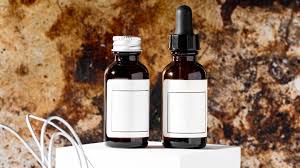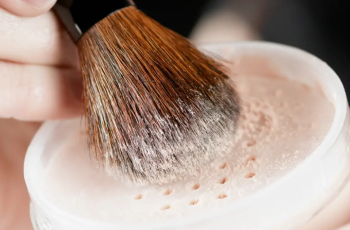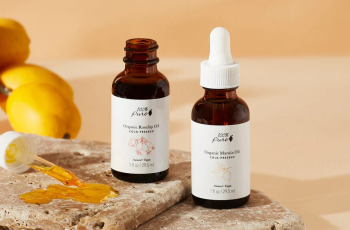



Can You Use Vitamin C and Copper Peptides Together?


In skincare, there are many active ingredients that deliver impressive results. Two of the most talked-about are vitamin C and copper peptides. Each offers unique benefits that can transform your skin.



Vitamin C is widely known for its brightening, antioxidant, and anti-aging properties. Copper peptides, though less mainstream, have earned attention for their skin-repairing and collagen-boosting abilities.


Naturally, many skincare lovers want to combine these powerhouse ingredients. But is it a good idea? Can you use vitamin C and copper peptides together without causing irritation or canceling out their benefits?



Let’s break down what each ingredient does and how to use them effectively—whether separately or as part of the same routine.


What Is Vitamin C and How Does It Work?



Vitamin C, also known as ascorbic acid, is a potent antioxidant that protects your skin from oxidative stress. It’s one of the most studied and celebrated ingredients in skincare.


Key benefits of vitamin C:



Brightens the complexion and evens out skin tone by fading dark spots and pigmentation.


Protects the skin from free radicals caused by UV rays, pollution, and stress.



Promotes collagen production, reducing the appearance of fine lines and wrinkles.


Improves skin texture and helps reduce blotchiness and dryness.



Leaves the skin glowing and feeling firmer over time.


Vitamin C is usually found in serums but can also be formulated into moisturizers and creams.



What Are Copper Peptides?


Copper peptides are naturally occurring amino acid chains that help support skin renewal. They’re prized for their ability to promote youthful, resilient skin.



Benefits of copper peptides include:


Stimulating collagen and elastin production, which improves firmness and elasticity.



Reducing fine lines, wrinkles, and sagging skin by supporting skin structure.


Accelerating skin healing and repair, especially after damage or irritation.



Enhancing the skin barrier, helping it retain moisture and stay strong.


Improving skin clarity, texture, and tone over time.



You’ll find copper peptides in serums, creams, and facial treatments designed to restore skin health and vitality.


Can You Use Peptides and Vitamin C Together?



Yes, you can use peptides and vitamin C together, but with care. These ingredients are potent and work differently, so timing and layering are important to avoid irritation.


Using both together in the same routine can sometimes cause instability in the formulation, especially when vitamin C is highly acidic. This may reduce the effectiveness of copper peptides.



To avoid this, apply them separately with a 10–15-minute gap between products. This allows each to absorb properly and reduces the risk of unwanted side effects like redness or irritation.


An easy option is to use vitamin C in the morning and copper peptides at night. This allows both ingredients to work their magic without interfering with each other.

Can You Combine Vitamin C and Copper?
You can—but not always directly. When copper and vitamin C are layered too closely, they may oxidize one another, reducing the effectiveness of both.
Copper can cause ascorbic acid (vitamin C) to oxidize prematurely, breaking down before it can benefit your skin.
To avoid this issue, use products that don’t contain free copper ions or apply the ingredients at different times of day. This ensures both can deliver their full benefits.
For example:
Apply vitamin C in the morning to protect and brighten your skin.
Apply copper peptides at night to support regeneration and repair while you sleep.
If using both in the same routine, allow 30 minutes between applications. Always start with the thinnest formula first—usually the vitamin C serum.
What Can You Combine Copper Peptides With?
Copper peptides are generally well-tolerated and can be safely combined with many other skincare ingredients.
Ingredients that pair well with copper peptides:
Hyaluronic acid – Boosts hydration and plumps the skin.
Niacinamide – Calms inflammation and supports barrier health.
Amino acids – Enhance overall skin repair and nourishment.
Ceramides – Help strengthen the skin’s protective barrier.
These combinations are especially helpful for dry, dehydrated, or sensitive skin types. They restore balance and support skin recovery without irritation.
That said, when combining copper peptides with stronger actives (like retinol, AHAs, or vitamin C), it’s best to use them on alternate days or leave enough time between applications.
What Should Go First: Peptides or Vitamin C?
When layering products, always apply from thinnest to thickest texture. Serums typically go before moisturizers or creams.
If both peptides and vitamin C are in serum form, apply vitamin C first, as it usually has a lower pH. Wait about 15 minutes, then follow with your peptide product.
If one ingredient is in a cream or thicker serum, apply that after the thinner product has absorbed.
You can also split their application entirely:
Morning routine: Cleanser → Vitamin C serum → Moisturizer → SPF
Evening routine: Cleanser → Copper peptide serum → Moisturizer or night cream
This approach minimizes interaction while maximizing the benefits of each ingredient.
Are Copper Peptides Better Than Vitamin C?
This depends on your skin concerns and goals. Both ingredients deliver great results, but they do so in different ways.
Vitamin C is ideal if you:
Have dark spots or uneven skin tone
Need protection from sun and pollution
Want an antioxidant boost in the morning
Want brighter, more radiant skin
Copper peptides are best if you:
Want to improve firmness and elasticity
Are concerned about skin healing or barrier health
Have dry, damaged, or aging skin
Want a gentle, non-acidic anti-aging ingredient
Neither is better universally—it’s more about how your skin responds and what you need at the time. Many people use both, alternating between them or applying at different times of day.
Should You Apply Vitamin C in the Day or Night?
Most dermatologists recommend applying vitamin C in the morning. This is when its antioxidant benefits are most helpful in protecting your skin from daily exposure to UV rays, pollution, and stress.
Vitamin C helps neutralize free radicals, prevent damage, and support the skin’s defense barrier. It also enhances the effectiveness of sunscreen when used underneath it.
You can use vitamin C at night, especially if your morning routine is already full or you’re using other antioxidants.
However, avoid using it at the same time as retinol or strong exfoliating acids unless spaced out properly.
Final Tips for Using Vitamin C and Copper Peptides Together
Want to get the most out of these skincare actives? Here are a few quick tips:
Start slow—Introduce each product gradually into your routine.
Use separately—Vitamin C in the morning, copper peptides at night.
Space them out—If layering, wait 15–30 minutes between applications.
Avoid harsh combos—Don’t use with strong acids, retinoids, or exfoliants at the same time.
Use sunscreen daily—Vitamin C boosts protection, but SPF is essential.
Watch for signs of irritation—Redness, stinging, or flaking means your skin may need a break.
Patch test new products—Always test before applying to your entire face.
Conclusion: Can You Use Vitamin C and Copper Peptides Together?
Yes, you can use vitamin C and copper peptides together, but it’s best to do so with caution and proper spacing.
Both ingredients support healthy, vibrant skin—but combining them incorrectly may reduce their effectiveness.
The best strategy is to:
Use vitamin C in the morning to brighten and protect.
Apply copper peptides in the evening to support repair and rejuvenation.
This way, your skin gets the best of both worlds—protection by day and renewal by night.
Still unsure? A dermatologist or licensed skincare expert can help you build the perfect routine for your skin’s unique needs.
And don’t forget, if you’ve got questions, drop us a DM over on Instagram—our skincare team is always happy to help!



